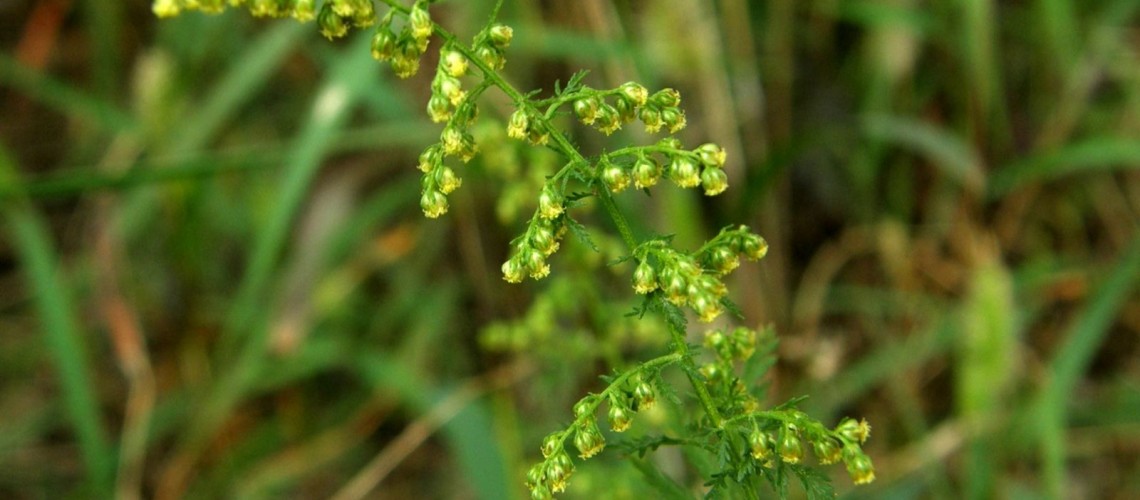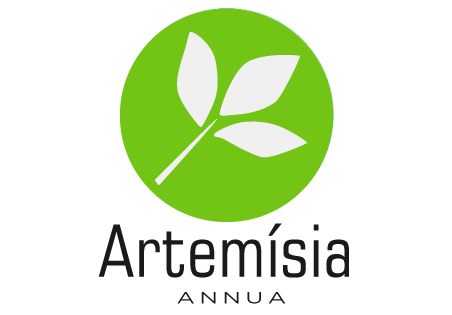L’Artemisia annua

L’Artémisia annua ou Armoise annuelle. Comme son nom latin l’indique, elle est annuelle. A contrario, la majorité des autres armoises comme l’absinthe, l’estragon, l’armoise commune, l’Afra, l’Aurone, le génépis… sont vivaces. La famille des Artémisia fait référence à Artémis. Les Artémisia sont généralement des plantes aromatiques.
Une petite histoire
En grec, artémisia veut dire intégrité et par extension veut dire bonne santé. La plante est dédiée à Artémis appelée aussi Diane, la déesse de la chasse, de la nature, des animaux sauvage et de la féminité. Elle est aussi protectrice des jeunes enfants. Artémis est vierge et escortée par des nymphes. Elle est toujours accompagnée de chiens de chasse ou d’une biche.Vêtue d’une tunique et de sandales, elle possède un carquois. Elle est prête à utiliser ses flèches. Elle aime la nature, la vie sauvage et les montagnes et cherche à les protéger. Autant Apollon est le dieu du soleil, Artémis est la déesse associée à la lune. Le lien probable entre les Artémisia et Artémis est que la majorité des effets de l’utilisation des Artémisia est en lien avec la femme. Nous aborderons dans d’autres articles ces liens féminins. Il n’est donc pas étonnant que Culpeper la place sous le signe de Vénus. (1)
Le genre Artemisia
Le genre Artémisia se décline dans, environ, 500 espèces réparties surtout dans l’hémisphère Nord. Elle fait partie de la famille nombreuse des Astéracées. Les fleurs sont regroupées ou ce que l’on appelle en jargon de botaniste, des fleurs composées. Chaque fleur est constituée de centaines de petites fleurs. C’est le cas de la marguerite, du pissenlit, du bleuet et même de la laitue. Dans le genre Artemisia les fleurs sont très petites avec un diamètre de moins de 7 mm. La graine des armoises est extrêmement petite. Parmi les 500 espèces, certaines sont protégées parce qu’elles sont endémiques d’une région.
L’Artemisia annua
Maintenant que nous en savons un peu plus sur les Artémisia, nous pouvons commencer à décrire celle qui est annuelle. Elle porte le nom d’annuelle mais aussi d’Artémisia chinoise. Ce nom nous montre que cette plante est utilisée par la médecine chinoise depuis des millénaires. Elle a une taille de 2 à 2,5 m, les feuilles sont alternes, vert-jaunâtres, pétiolées à lobes très fins, linéaires ou lancéolés. Les fleurs sont très petites. Les fruits sont des akènes déposés sur un réceptacle glabre. Cette plante est odorante et dégage une odeur de fraîcheur.
Les caractères de l’Artemisia annua
Biotope primaire. Plante exotique de Chine qui s’est adaptée dans les grandes plaines alluviales.
Biotope secondaire. Cette plante peut être trouvée le long des routes ou des chemins, comme dans des zones ou des friches industrielles ou les terrains vagues. On les trouve aussi dans les vignes, les vergers et dans les espaces cultivés.
Ses caractères indicateurs. Sol à très faible caractère de rétention. Carence en humus, carence en matière organique.
Principes actifs
Il est très compliqué de découvrir les principes actifs de l’Artémisia annua (Aa), comme si cette plante ne pouvait pas être découverte. Pas un traité de médecine ne risque de parler de cette espèce. Nous avons assez de descriptifs pour l’estragon, l’absinthe, la vulgaris, la blanche mais l’annua, quasiment rien. De tous les livres, en ma possession, pas un seul n’ose aborder cette plante à l’exception de celui de Bernard Bertrand. (2) C’est là que je me dis qu’il est temps que je rencontre ce chercheur.
La seule chose que nous savons est que l’annua possède le plus haut taux d’Artémisinine, à hauteur de 62 %. Il faut passer par la case Internet pour avoir des informations supplémentaires sur ces principes actifs : les lactones sesquiterpéniques, les alcools sesquiterpéniques et les acides sesquiterpéniques. Également riche en polyines, flavonoïdes, coumarines, stérols et en triterpènes, elle est reconnue pour renforcer le système immunitaire. En effet, elle influe sur les maux de tête, les insolations, de même que la fièvre et ses principes actifs stimulent efficacement le corps humain.
Utilisation de l’Artemisia annua
Plante médicinale
L’Artémisia annua est dotée d’un principe actif de base qui est l’Artémisine. Voici ce qu’en dit Wikipédia que je vous invite à lire plus avant, si cela vous branche : “L’artémisinine est la substance active médicamenteuse isolée de la plante Artemisia annua et dont la vertu médicinale est connue en Chine depuis plus de 2 000 ans. Il s’agit d’une lactone sesquiterpénique portant un groupe peroxyde qui semble être le fer de lance de son efficacité thérapeutique“. Le texte le plus ancien décrivant les 50 atouts de cette plante date de 168 avant J.C et provient de Chine. Cette plante, le Qinghao, utilisée en tisane, a permis aux soldats Nord-Vietnamiens de résister contre le paludisme. En 1979, le chercheuse en pharmacie chinoise, Tu Youyou, a réussi à isoler la molécule de l’Artémisine, ce qui lui valu d’obtenir le prix Nobel de Chimie en 2015.
Sans effets secondaires
Actuellement, l’annuelle est reconnue commetonique amer,fébrifuge et antiparasitaire. Il est indéniable que cette plante a un goût très amère qui a la faculté de soigner certains troubles dû à la chaleur notamment les fièvres, les maux de tête, les éblouissements et les sensation d’étouffement pulmonaire. Elle arrête aussi les saignements de nez en cas de forte chaleur. Son coté tonique amer peut permettre de faciliter la digestion en prenant une tisane avant ou après les repas trop copieux.
La médecine conventionnelle ne reconnaît pas les vertus de l’artémisia pour le paludisme. Elle suit les revendications de l’OMS en déconseillant l’usage d’une simple plante en tisane (2). Ben tiens ! Alors que la littérature scientifique (4) est de plus en plus importante montrant les effets positifs de cette plante à travers le monde. Il a été constaté, pour les Africains, que boire une tasse d’artémisia par jour faisait chuter les risques de malaria de 95%, sans effets secondaires ! De plus, les Africains ont été si peut touchés par le Covid qu’il est probable qu’il y ait un lien de cause à effet.
Et les autres pathologies ?
Le gouvernement malgache, en 2020, s’est fait remarquer en décidant d’utiliser l’Artemisia annua pour soigner les personnes atteintes du Covid. Cela lui a valu des sanctions de l’OMS. Une dizaine de pays, dont le Sénégal ou l’Allemagne, ont travaillé sur cette question et ont obtenu de très bons résultats quant à la guérison des malades. De plus, l’institut Max-Planck de Potsdam en Allemagne a déclaré que l’Artemisia Annua a un effet antiviral contre le coronavirus. L’OMS s’est opposée, une fois de plus, sur son utilisation. Il est clair en tout cas, que l’Artemisia renforce l’immunité de personnes qui pourraient attraper le Covid.
L’Artemisia annua est étudié, notamment, pour la maladie de Lyme, la schistosomiase et donc la Bilharziose, la maladie du sommeil, le VIH et certains cancers dont celui du sein. Les recherches sont réalisées dans des laboratoires, notamment, africains qui commencent à avoir leur mot à dire dans le monde scientifique. C’est une bonne chose
En cuisine
Les deux Artemisia que nous avons abordé ici ne se cuisine pas tant leur goût est amer. Nous pourrions parler de l’absinthe (9), de l’aurone, du génépi, de l’estragon en cuisine. Mais ils sont hors sujets pour le moment.
Autres utilisations
Si l’Armoise annuelle se retrouve sur les friches industrielles, ce n’est pas sans raison. Cette plante est une des meilleures pour nettoyer le sol des pollutions chimiques, notamment, qui s’y trouvent. Elle a le même pouvoir que la laitue et la carotte en termes de nettoyage. Il est clair que pour ces trois plantes, il est de bon ton de ne pas les consommer, ni de les mettre dans le compost, mais bien de les déposer dans une entreprise spécialisée. Ce service est gratuit. Voilà donc une autre utilisation de l’Artémisia qui a son importance. Les plantes nettoyeuses prennent environ 15 ans pour assainir un sol.
En conclusion
Cette plante a des atouts non négligeables pour la santé humaine.















































